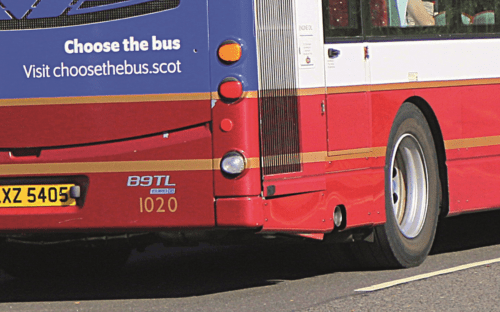
Jonathan Welch considers the results of a recent report on underperforming bus exhaust SCR retrofits
In late 2021, evidence began to emerge that exhaust retrofits fitted to buses were not performing as expected. In response, the Joint Air Quality Unit (JAQU, a partnership between the DfT and DEFRA) commissioned an evidence review to obtain evidence on the performance of selective catalytic reduction (SCR) bus retrofit technology in reducing emissions of nitrogen oxides (NOX), which are emitted from combustion processes such as those in engines.
SCR technology has been used for several decades by the automotive industry to control NOX emissions, and applied to buses more recently. Several Government funding schemes supported the retrofit of the technology in buses, reported to have cost up to £94m, as a means of improving air quality and meeting legal limits for pollutants, and approximately 8,800 buses have been fitted with SCR retrofit technology in England.
The evidence review was evaluated in spring 2022 and indicated underperformance of the technology in reducing NOX emissions, but the evidence was limited, so JAQU commissioned a remote sensing emissions campaign in three English cities between September and December the same year to confirm whether there was an issue with performance of the technology. The campaign obtained over 2,800 measurements of emissions from retrofitted buses.
The measurements from the initial campaign showed that SCR on retrofitted buses is not consistently reducing emissions as expected. Instead, there was found to be considerable variation in performance. In some cases retrofitting has reduced NOX emissions, while in others, emissions from retrofitted buses were found to be comparable to or greater than emissions from non-retrofitted buses.
The findings were consistent with findings from Transport Scotland in 2021 and provided strong evidence that there was an issue with the technology and a need for required further investigation. Observational evidence also showed a large variation in the performance of retrofit technology that could not be explained by a single causal factor.
Additional investigation
A programme of work was carried out in spring 2023 to understand why NOX and NO2 emissions from retrofitted buses had not reduced as much as expected, and what was the scope for achieving and maintaining greater NOX and NO2 emissions reductions from retrofitted buses.
[…]
By subscribing you will benefit from:
- Operator & Supplier Profiles
- Face-to-Face Interviews
- Lastest News
- Test Drives and Reviews
- Legal Updates
- Route Focus
- Industry Insider Opinions
- Passenger Perspective
- Vehicle Launches
- and much more!


